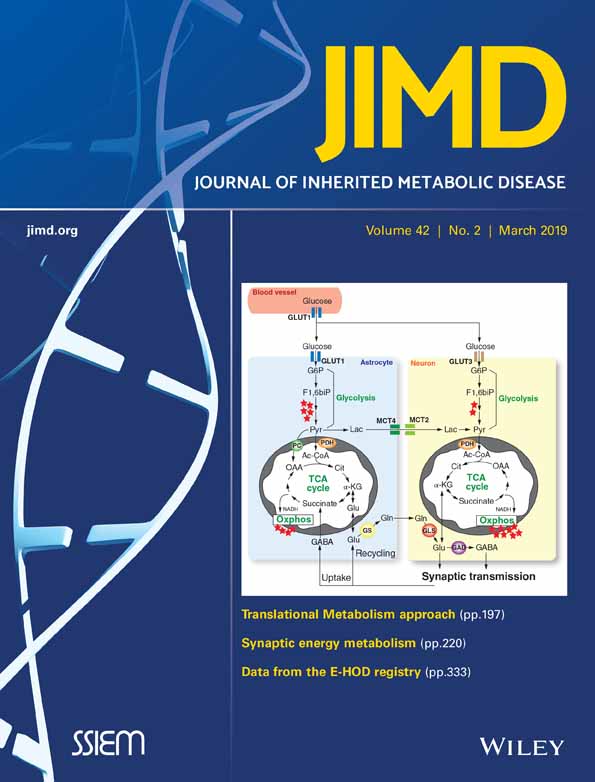Quantitative natural history characterization in a cohort of 142 published cases of patients with galactosialidosis—A cross-sectional study
Abstract
Galactosialidosis (GS; OMIM #256540) is a rare multisystemic inborn glycoprotein storage disease caused by biallelic mutations in the cathepsin A gene resulting in combined deficiency of the lysosomal enzymes β-galactosidase and α-neuraminidase. The precise understanding of the natural course of the disease is limited. Development of enzyme replacement therapy is at the preclinical stage. The purpose of this research project was to quantitatively characterize the natural history of the condition. Quantitative analysis of all published cases in the literature with sufficient data (N = 142 patients) was carried out. Main outcome variables were survival, diagnostic delay, description of symptoms, biomarker-phenotype associations, and radiological findings. STROBE criteria were respected. Median survival age of the cohort was 48 years. Median age of onset was 4.25 years with interquartile range (IQR) 1 to 16 years. Median age at diagnosis was 19 (IQR: 8.92-29) years, with median diagnostic delay of 8 (IQR: 4-12) years. Patients with residual β-galactosidase activity of more than 8.6% (leukocytes) survived significantly longer than patients with lower enzyme activities.
CONFLICTS OF INTEREST
M.R. received consultancy fees or research grants from Alexion, GSK, Oxyrane and Shire outside of this work. T.S., S.F.G., S.K. and G.F.H. declare that they have no conflicts of interest.




